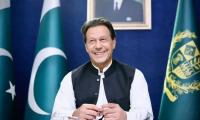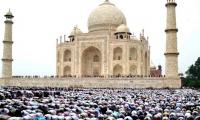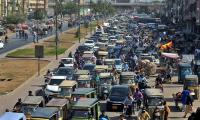We are living through an era where emergencies appear more regularly than the norm. The ‘war on terror’ from 2001, the financial crisis of 2008, civil wars in the Middle East, followed by the ‘refugee crisis’ and the ongoing ‘climate crisis’ that threatens the obliteration of the planet, are all manifestations of the extraordinary times we live in.
These socio-economic crises have been supplemented by health emergencies that frequently threaten our social fabric. The AIDS epidemic has affected people throughout the world, particularly in Africa, where a large percentage of the population suffered the debilitating effects of this deadly virus. The Ebola epidemic and Dengue fever also induced mass fear in the public, even if their geographical reach was limited to specific regions of the Global South.
The Coronavirus Pandemic fits into these broader events that have cast a shadow of fear and uncertainty over our times. The botched response by governments, including that of the United States, has only amplified the threat felt by people globally, revealing the vulnerability undergirding the global order.
It is not unreasonable for people to be in a state of panic when the mortal threat they face is both pervasive and anonymous. Panic, however, often forces people to enter into survival mode, opening them to manipulation and surrendering the hard won freedom of public questioning. This is precisely why public emergencies have appeared as a preferred moment for governments to push through unpopular and anti-people policies without much opposition from a terrified and demobilized population.
Naomi Klein famously called this phenomenon the “Shock Doctrine”, an emergency situation that disables the public’s cognitive capacities and renders them palatable to unpopular decisions. Such mass disorientation in the wake of the 1970s and 1980s ‘debt crisis’ permitted Western governments and powerful financial institutions to impose ‘structural adjustment programmes’ on third-world countries. These policies included cuts to government spending, particularly in the social sector, and reducing tariffs on imports, plunging much of the developing world deeper into poverty, while fuelling monstrous inequality around the globe.
Similarly, the fear induced by the terrorist attacks on September 11, 2001 permitted the Bush administration to use popular panic with strategic precision. Apart from suspending rights through the Patriot Act, Bush also managed to extend the scope of the ‘war on terror’ to Iraq, a country that had nothing to do with Al-Qaeda or the Taliban. A frightened public accepted the lies peddled by their commander-in-chief, resulting in devastating consequences for Iraqi people and the destabilization of the entire region.
The financial crisis of 2008 provoked a similar response where governments touted the mantra “We all are in it together”. Yet, governments were swift to bail out the banks that had caused the crisis, while imposing crushing austerity and budget cuts on the public. Since 2008, we have witnessed an unprecedented level of inequality and transfer of wealth to the elites, belying claims that ‘all’ are facing the brunt of such crises.
One can provide more examples, but it is sufficient to observe two patterns in cases of social emergencies. First, neither the causes nor the solutions to these crises are neutral. For example, the so-called refugee crisis in Europe is a direct response to the endless cycle of violence promoted by the same Western governments that now fear the refugees. More importantly, the panic induced by the phenomenon prevented citizens from asking difficult questions about the centrality of war in Western foreign policy. Instead, it allowed Far-Right groups to single out refugees and migrants as the embodiment of the crisis, paradoxically fuelling the xenophobia and militarization that produced the crisis.
Second, the resolution of each emergency in favour of ruling elites takes place by nominating a large section of the global population as disposable. This surplus humanity has taken different names in different situations; poor, Latinos, Muslims, elderly and others discarded by a system that cannot fulfil its own professed commitment to humanity. It is not surprising that each crisis has intensified the hardening of borders, walls, barricades and surveillance to intensify the separation of the healthy and the affluent from the wretched of the Earth.
This brief history is not an attempt to underplay the very real threat posed by the coronavirus and other emergencies to our well-being. Indeed, denying the severity of the crisis would be akin to rejecting overwhelming scientific evidence of the threat posed and hence would be dangerously naïve. Yet, it is important to maintain the critical distance necessary to think about the issues and people being neglected in these troubled times.
In our case, it is absolutely pertinent to ask who the people are who cannot afford to stay home and avoid crowded places. The answer is obvious; it is the working class that forms the surplus humanity of our supposedly ‘neutral’ discourse on preventative care. Factories in Pakistan, hazardous and unhygienic in the best of times, have still not been shut down. Daily wagers and those on contract cannot afford to miss a day of work and must risk their lives to continue making enough for their bare existence.
What is worse is that worker quarters in Lahore (and across the country) are perpetually overcrowded due to shortage of low-income housing, nullifying the injunction asking people to stay home to avoid crowds. Moreover, maintaining hygiene is impossible as the water in much of these areas is contaminated by chemicals from factories, a sordid reminder of the lack of environmental regulation in factory areas. Even in ‘normal circumstances’, these spaces remain centres of epidemics, including water-borne diseases such as typhoid and hepatitis.
Not only are the economic conditions making the poor more susceptible to disease, but the infrastructure of our cities is both anti-poor and anti-health. Those who cannot afford to live in affluent areas are drinking polluted water in a country where 40 percent of deaths are due to water-borne diseases. Their lives are shaped by perpetual risk, while living in a state of permanent emergency. Life and death is thus inscribed within the spatial layouts of our segregated cities.
With coronavirus and dengue fever, we have found that no amount of barricades or social apartheid will prevent the spread of such deadly diseases. The same is true for the looming environmental catastrophe. An example is Lahore’s smog season, in which the government focuses more on personalized care rather than the causes of the crisis, including lack of environmental regulation, a poor public transport system and the absence of debate on transition to renewable energy sources.
The danger of such an approach is well articulated by the Italian philosopher Giorgio Agamben, who explains how a shift from emphasizing the causes to the consequences of a crisis serves to limit the scope of debate and allows states to bury difficult questions under a state of emergency.
We are headed towards such a dystopic scenario if we give up engaging with the difficult questions in these difficult times. Without public housing, worker rights and a functional healthcare system, we will accelerate our descent into class apartheid.
Those who suggest that crises are not moments for discussing political issues should remember that the key political decisions of our times were made precisely in times of emergency. To give up demanding social and economic rights during a moment of crisis is to surrender the right to engage in politics. With a dystopic future hovering above our present, neglect of such concerns amounts to an abdication of responsibility that we as citizens can no longer afford.
Email: ammarjan86@gmail.com
The writer is an historian and a member of the Haqooq-e-Khalq Movement.
Critics argue that strategy is vague, but closer look indicates strategic alignment with global trends and national...
To defeat it, we must distrust bot-driven narratives, to defeat it, we must verify sources before believing or sharing
Too often in emerging markets, digital innovation is treated as standalone goal, with risk relegated to afterthought
As in Pakistan lawfare’s impact and prevalence are increasing, situation is turning murkier
Number of traditions are associated with Eid, such as new clothes and giving and receiving of cash gifts as Eidi
Internationally, there have been misleading theories propounded about so-called slowing of Chinese economy







